Banitsa is a traditional Bulgarian cheese pie recipe that can be layered or rolled. It is made from thin crusts of dough topped with a mixture of eggs, yogurt, and, most importantly, white brine cheese. After baking, the banitsa is a fluffy, golden brown, and soft pie with a crispy crust on top.
The white brine cheese (Sirene in Bulgarian or Fete in Greece) plays an essential role in the recipe, which is an indispensable part of the table of the Balkan nations. Another key element of banitsa is the traditional Bulgarian yogurt that provides a unique tartness to the treat.
There are many approaches to banitsa, the filling can be both sweet or savory by altering the fillings (Turkish sweets, leeks, or spinach). Either way, people enjoy banitsa in Bulgaria as a breakfast or as a treat for guests.
It is often enjoyed during festive occasions, family gatherings, and holidays, particularly Christmas, Easter, and New Year’s Eve, where it is customary to hide lucky charms or small coins inside for good fortune.
Which Tools Are Essential for Banitsa Preparation?
Making banitsa is simple, but what makes the recipe more appealing lies in the few tools you need. Here are a couple of utensils to pull off this delectable Bulgarian treat at home.
Which Ingredients Make Up Banitsa?
Before jumping into the kitchen, here are a couple of ingredients you need to have to pull off this Banitsa recipe right at home. These elements are easy to find at any grocery store.
What Are the Directions for Making Banitsa?
It’s time to nail your Banitsa with this simple instruction. All you have to do is follow these simple guides to experience a Bulgarian treat right at home.
Step 1: Prepare the Cheese Filling
First, place 7 ounces of drained cheese in the bowl and crumble it with a fork (or with fingers). Then mix well with:
Set the mixture aside.
Step 2: Preheat the Oven and Baking Tray
Preheat the oven to 356°F (180°C). Meanwhile, grease a medium-sized baking tray with oil.
Step 3: Spread the Pastry Sheets with The Butter Mixture
Take a sheet of Filo dough and spread it out on a clean work surface with the wider side facing you. Brush the sheet with some of the oil using the basting brush.
Step 4: Distribute the Filling Over Pastry Sheets and Roll Them
Spread the filling mixture around the sheet evenly. Then, lift the edge of the sheet closest to you and roll/fold it. Roll the sheet into a snail and place it in the middle of your baking tray.
Repeat steps 3 and 4 with other sheets (without rolling it into a snail), wrapping it around the rolled first sheet in the baking tray. Repeat with the rest of the sheets until you fill up your baking tray.
Step 5: Bake the Banitsa
Brush the banitsa with the remaining oil. Transfer the tray to the oven and bake at 356°F (180°C) for 25 minutes or until puffed and golden brown.
Once baked, remove it from the oven and let it cool for about 10 minutes before slicing.
What Are the Secrets to Perfect Banitsa?
Below are 3 key tips to consider when making banitsa:
Bring a Breeze of Bulgarian Culture to Your House with Banitsa
A lovely breakfast or dessert is irresistible for an impeccable meal. For that, Banitsa delivers a mesmerizing soft texture and a crisp outer layer. Better yet, Banitsa doesn’t require any sophisticated utensils to whip up.
Feel free to create this iconic Bulgarian treat whenever you want. Don’t forget to leave your opinion on what it’s like to create the Banitsa. Share this article with your close ones so they can materialize this easy recipe at home.
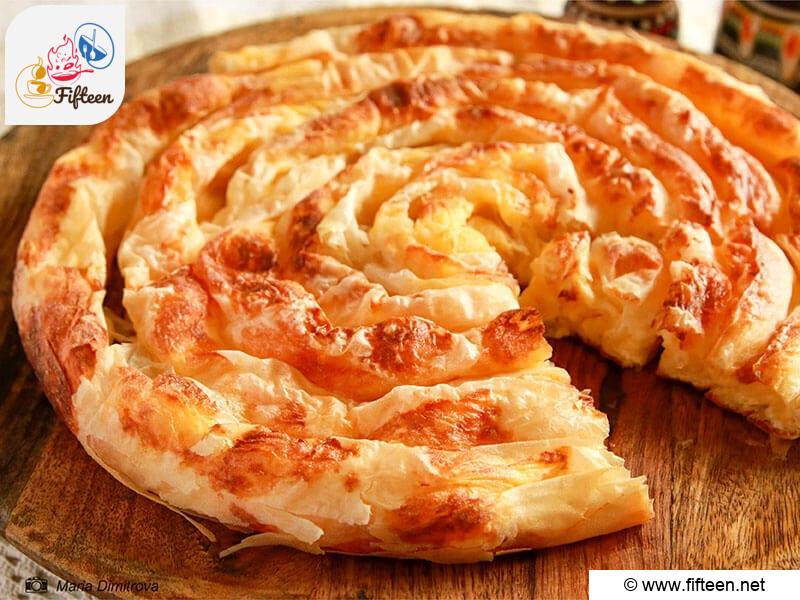
Banitsa Recipe (Bulgarian Cheese Pie)
Equipment
- Oven
- Baking tray
- Bowl
- Basting Brush
- Fork
Ingredients
- 8 Filo pastry sheets
- 9 ounces of yogurt
- 3 eggs, large
- 7 ounces of white brine cheese or Feta cheese
- 0.5 teaspoon of baking soda
- 1 ounce of butter
- 1 ounce of sunflower of oil
Instructions
- In a bowl, break up the white brine cheese (or Feta) into small chunks. Proceed to incorporate eggs, baking soda, and yogurt. Set the filling mixture aside.
- Allow the oven to preheat to 356°F (180°C) and grease the baking tray with oil.
- Lay the pastry sheet over your kitchen surface and gently use a brush to distribute an oil mixture of sunflower oil and butter.
- Take the yogurt mixture and spread it evenly over the pastry sheet. Then, lift the closest edge of the sheet and start rolling it into a cylindrical shape. Continue to roll the cylindrical pastry into a snail.
- Repeat steps 3 and 4, placing the rolled sheets around the first snail-shaped until you fill up the baking tray.
- Apply the remaining oil to the banitsa surface and bake at 356°F (180°C) for 25 minutes.
- Allow the baked banitsa to cool off for 10 minutes before slicing.
Video
Notes
- If you solely use butter to brush banitsa, the pastry dough may become tougher after baking. Therefore, I suggest mixing an equal amount of butter and sunflower oil to handle this problem.
- Make sure you use a damp towel to cover the pastry sheets since they easily dry out at room temperature.
- The total time of this recipe is based on 8 – 10 servings.


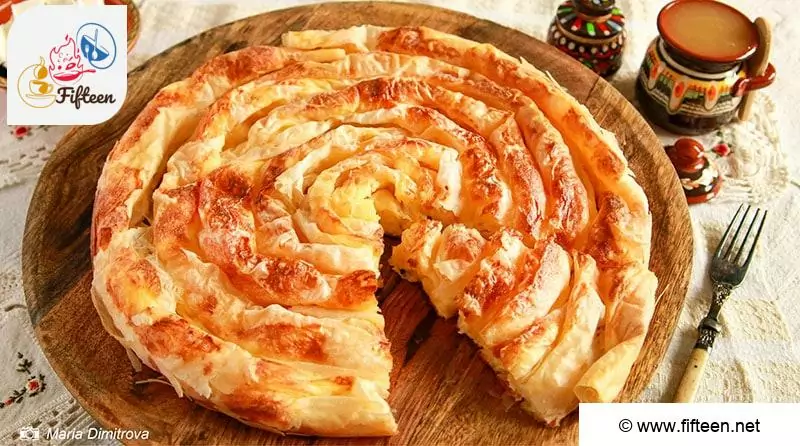
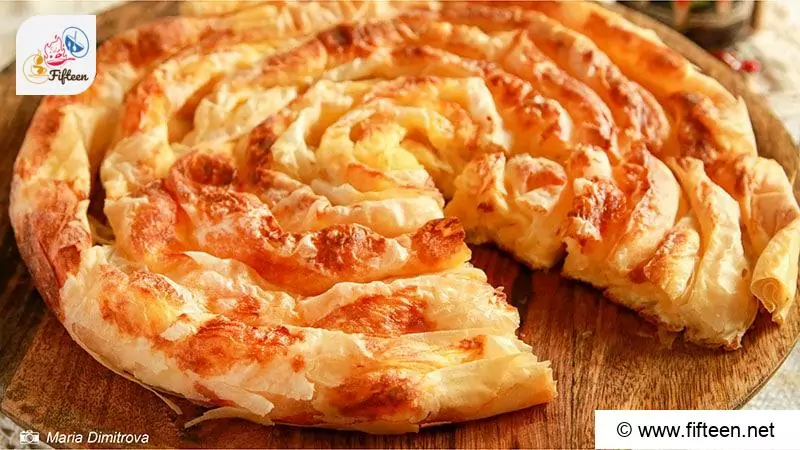
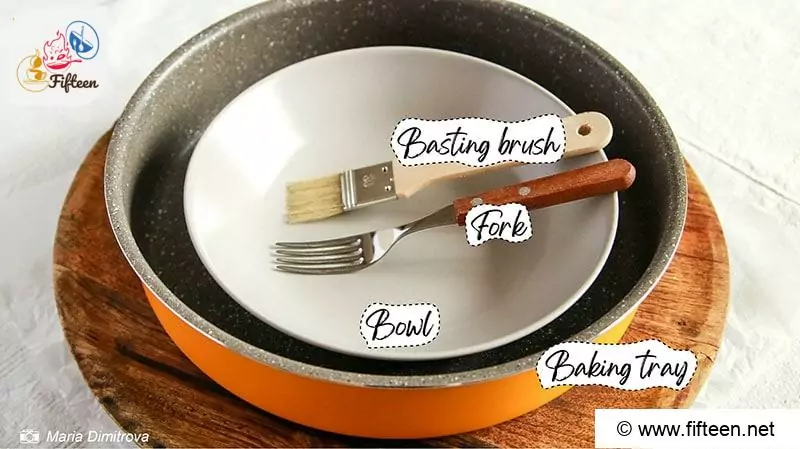
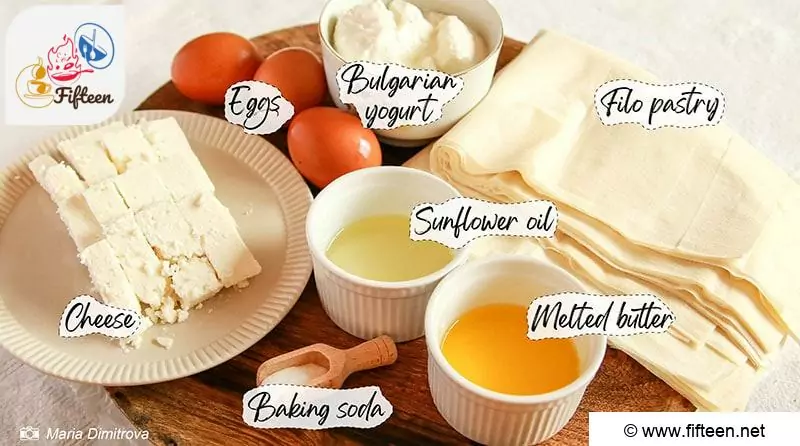
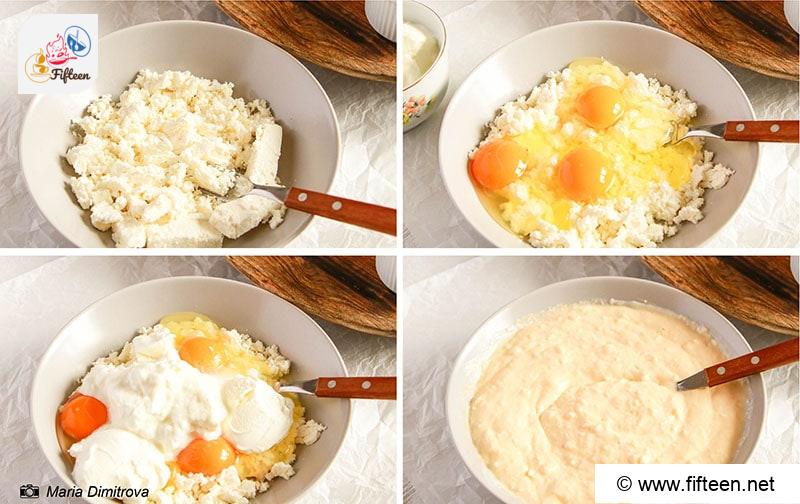
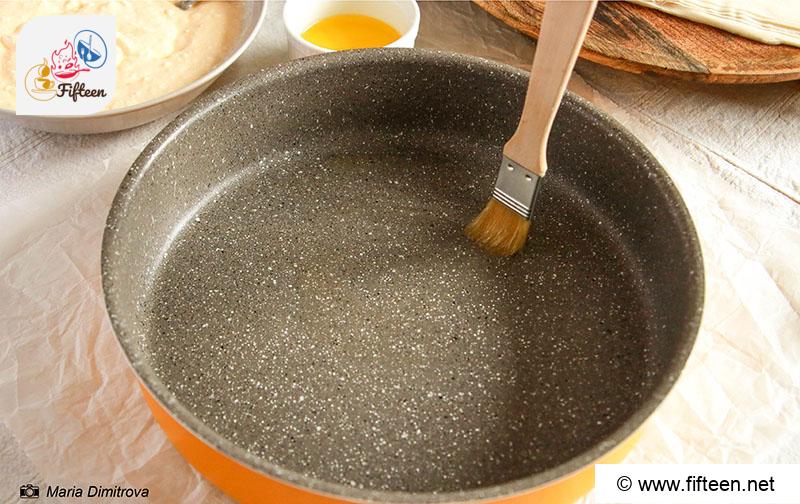
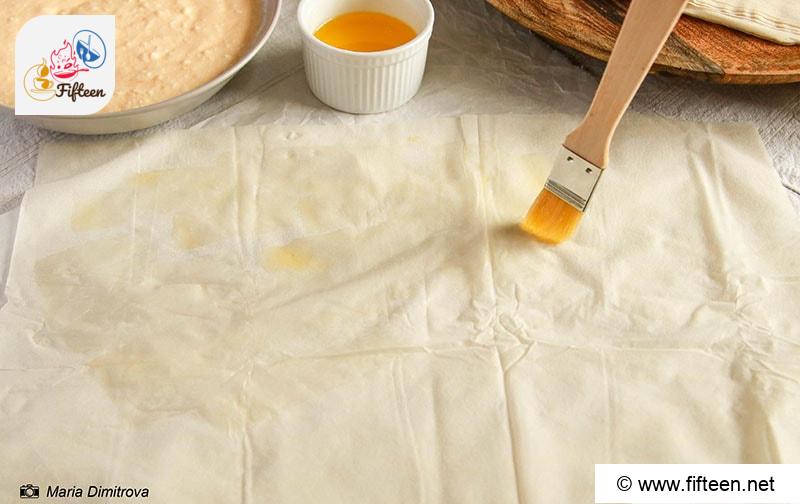
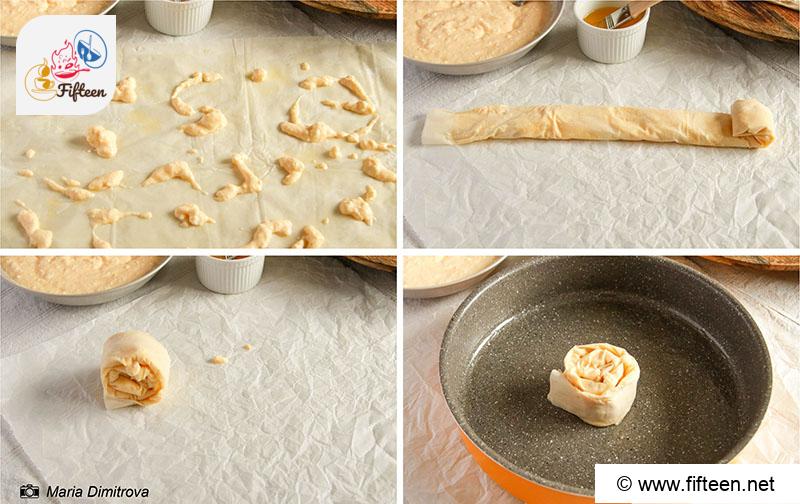
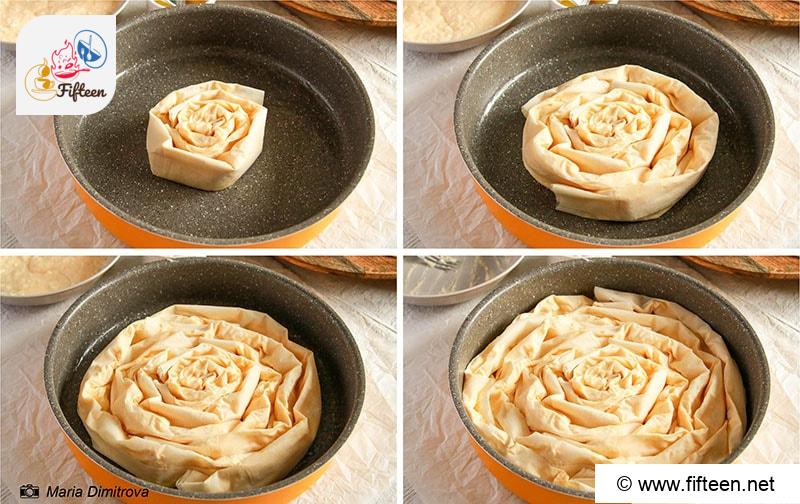
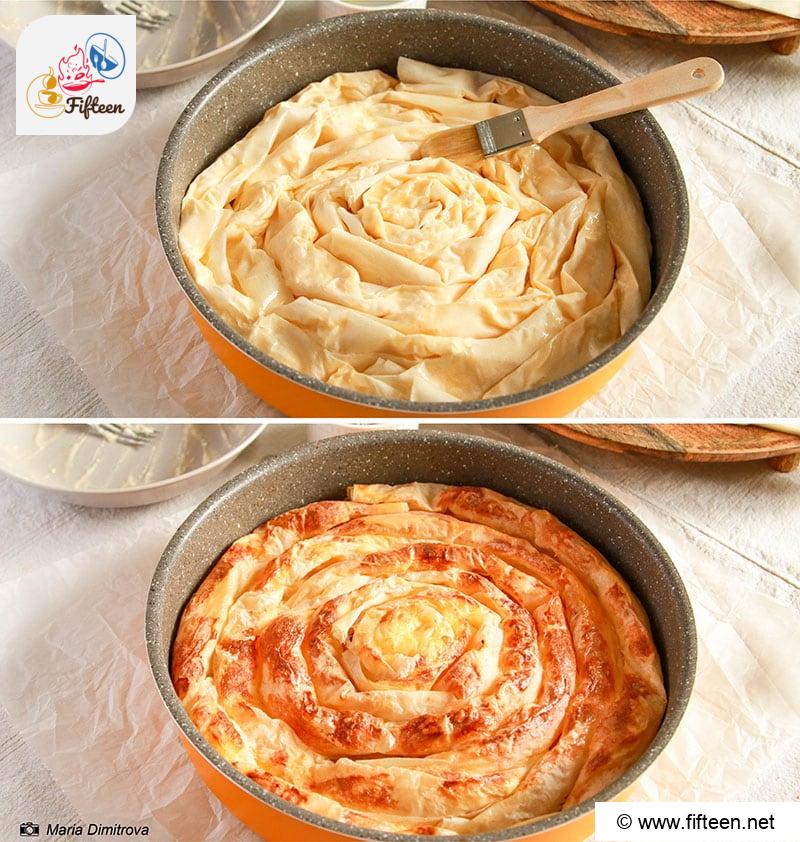
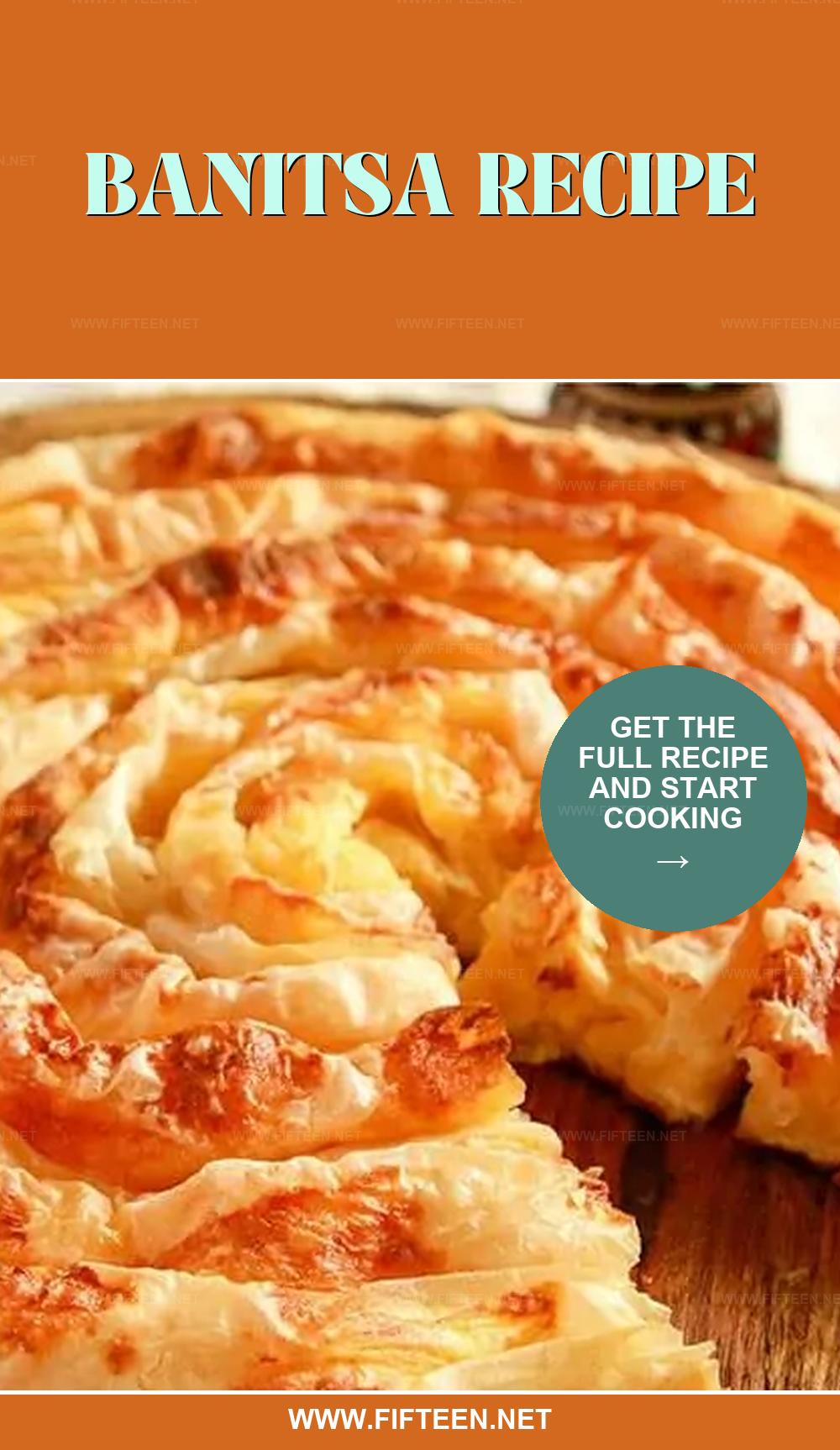
Mia Dimitrova
Content Writer
Expertise
Home Cooking, Meal Planning, Food Styling, Food Photography, Culinary Storytelling, Cooking-video Maker, European Food Content Creator, Bulgarian Food Evaluation Expert
Education
Sofia University “St. Kliment Ohridski”
Completed a thesis titled “Bulgaria on a Plate: A Photographic Journey through our Gastronomic Legacy.”
European Culinary Arts Academy
Maria Dimitrova, or Mia, is a Contributing Writer from Sofia, Bulgaria. Her work beautifully intertwines the rich flavors of Bulgarian and European dishes with their visual storytelling, capturing the soul of each cuisine. Through engaging content and stunning photography, Maria explores the intricate relationship between food’s aesthetic appeal and cultural history.
Specializing in home cooking, food styling, and photography, she brings European culinary traditions to life, offering a unique glimpse into Bulgaria’s gastronomic heritage. Maria’s expertise highlights her deep appreciation for culinary art and invites her audience to embark on a flavorful journey through Europe’s diverse food landscape.